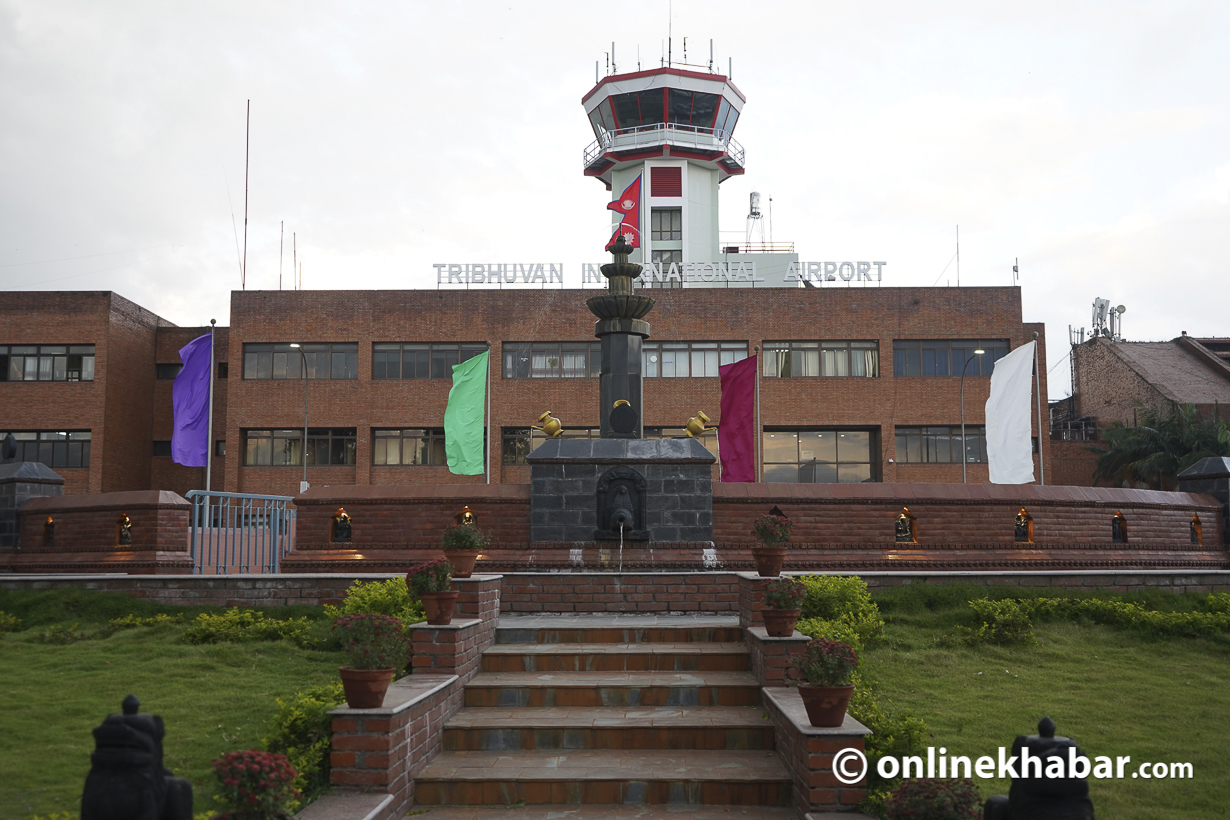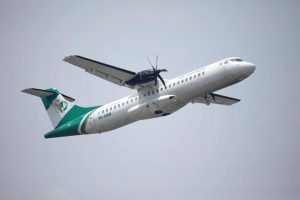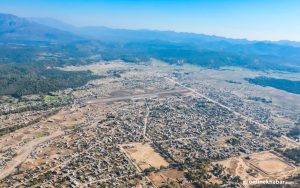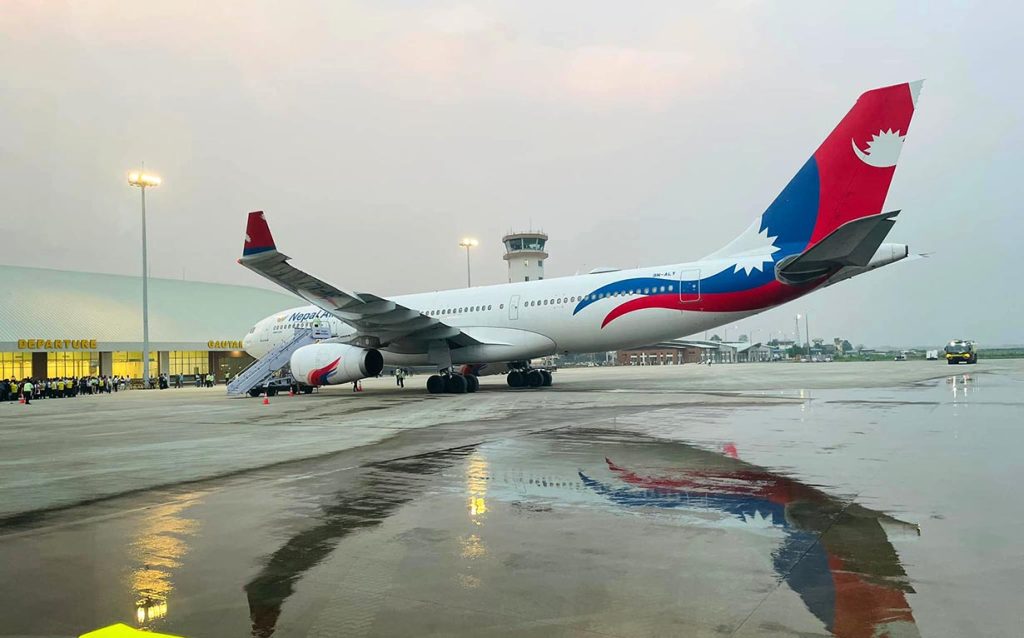
Air transport is a crucial component of modern transportation systems, offering speed and efficiency, particularly for long-distance and international travel. It has become a reliable and effective means of connecting Nepal with other countries of the world and is also a major means of connecting internal regions.
It plays a crucial role in Nepal’s economic development, connectivity, and overall progress. The economic prosperity of Nepal relies on the operation of aircraft.
Air transportation and Nepal’s economic well-being

Nepal has a challenging and diverse geography that shows the need for air transportation in Nepal. Air transportation serves a dual role, not only facilitating the influx of tourists into a country but also playing a crucial role during emergencies. In times of crisis, air transport becomes the linchpin for swiftly and safely delivering aid to areas impacted by natural disasters.
Moreover, Oxford Economies’ data sheds light on the importance of air travel for Nepal’s economic well-being. The air transport sector makes up 3.7 per cent of the GDP and is an important part of the economy.
This percentage shows how important the sector is for trade, business, and economic growth in Nepal. It is a key part of the country’s development. Additionally, the information shows how important air travel is for the growing tourism industry.
Foreign tourists coming by air brought in USD 1.1 billion to the economy, showing the effects on the tourism industry. Another importance is that the air transport sector creates 455,000 jobs in Nepal.
Directly, the sector supports 14,000 jobs and contributes an impressive USD 166 million to the Gross Value Added (GVA). These jobs likely encompass a range of roles within the aviation industry, from pilots and flight attendants to ground crew and administrative staff, illustrating the sector’s direct employment impact.
The supply chain connected to air transport further extends its economic influence, generating an additional 36,000 jobs and contributing US $65 million to the GVA. This reflects the interconnected nature of industries supporting air transport, including aircraft maintenance, catering, fuel services, and other related sectors.
Employee spending within the air transport industry creates another economic impact, supporting 23,000 jobs and contributing USD 41 million to the GVA. This includes spending on goods and services by individuals employed directly in the sector, which in turn stimulates economic activity in various local businesses.
The tourism sector, largely facilitated by air travel, emerges as a major contributor to both employment and economic value. A staggering 381,000 jobs are supported through tourism-related activities connected to air transport, contributing a substantial USD 807 million to the GVA. This encompasses jobs in hospitality, travel agencies, and various services that cater to the needs of tourists arriving by air.
Beyond the direct contributions to GDP and employment, the sector’s influence extends through the supply chain, employee spending, and the tourism sector, demonstrating its crucial role as a driver of economic growth and prosperity in the country.
The flow of goods, investment and people in Nepal

The economic indicators further underscore the vital role of air transport in Nepal’s economic landscape. The USD 712 million in foreign tourist expenditure signifies the substantial financial contributions made by international visitors arriving via air travel. This expenditure not only supports local businesses and services but also contributes to the overall balance of payments, strengthening Nepal’s economic position on the global stage.
Foreign Direct Investment (FDI) of USD 1.9 billion reflects the confidence of international investors in Nepal’s economic prospects, with the air transport sector likely playing a crucial role in facilitating global business connections and partnerships. FDI has the potential to spur economic growth, create jobs, and foster technological advancements.
The USD 2.5 billion in exports further highlights the global reach facilitated by air transport. Efficient air connectivity enables Nepali businesses to access international markets, promoting trade and enhancing economic diversification. This export figure underscores the importance of air transport in connecting Nepal to the global economy, enabling the country to participate actively in international trade.
These indicators demonstrate the wide-ranging impact of air transport in Nepal, extending beyond its immediate contributions to GDP and job creation. The sector catalyses tourism-driven expenditures, attracts foreign direct investment, and facilitates international trade, collectively contributing to Nepal’s economic development and integration into the global marketplace.
Airplanes shuttle people to and from Nepal and other countries. Air transport delivers advantages to both consumers and the broader economy by establishing rapid links between cities. These airborne connections act as virtual bridges, facilitating the economic movement of goods, investments, people, and ideas, which constitute the essential catalysts for economic development.
The primary destination for passenger traffic to Nepal is the Asia-Pacific region, with the Middle East and Europe following closely. Nepal received 3.1 million passengers from the Asia-Pacific region, constituting 75.3 per cent of the total. Additionally, 674 thousand passengers arrived from the Middle East, comprising 16.4 per cent of the total, while 234 thousand passengers came from Europe, representing 5.7 per cent of the total arrivals.
Passenger facilitation, visa openness and air cargo trade facilitation
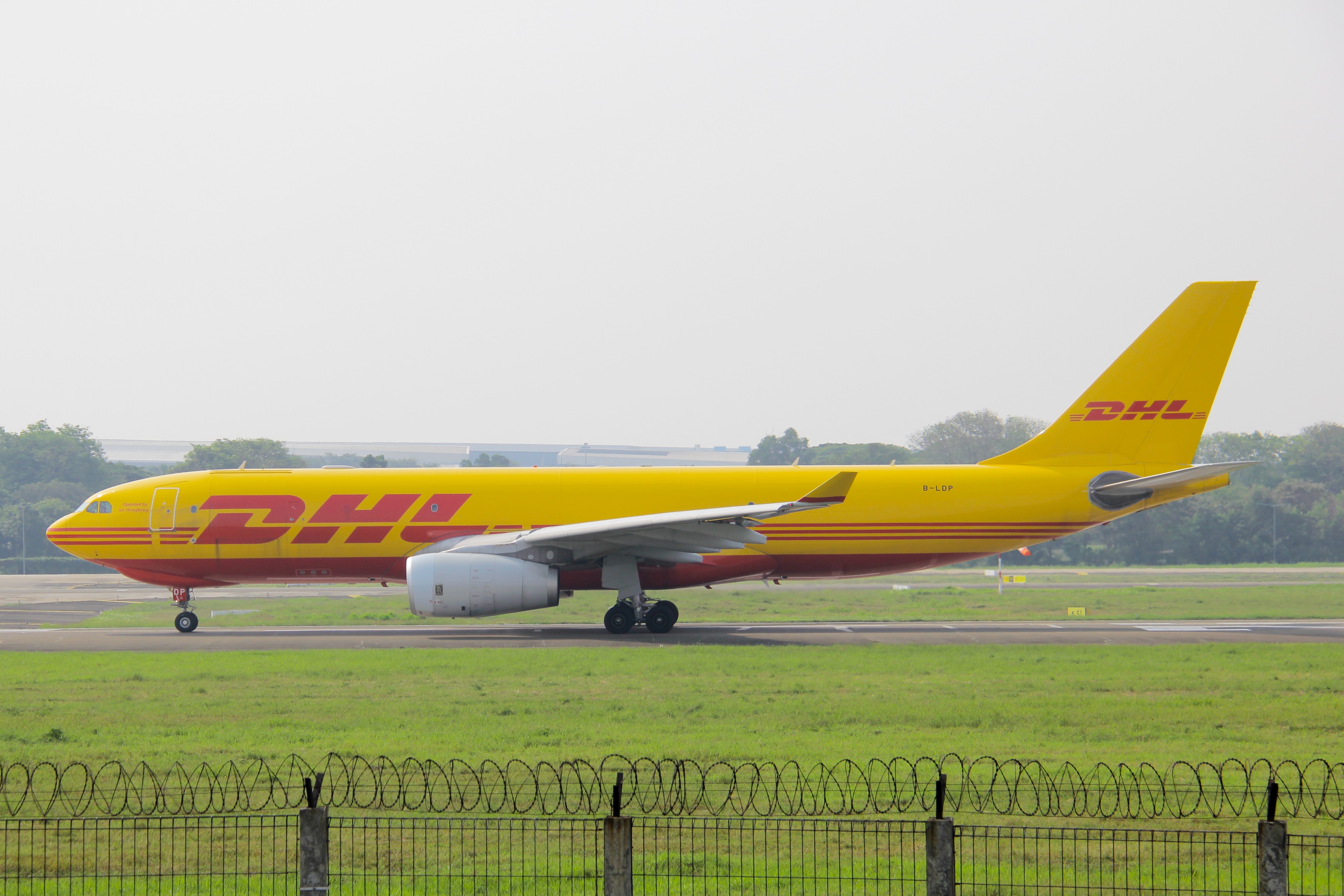
Nepal’s aviation landscape, as reflected in the provided statistics, presents a mixed picture across various facets. The Passenger Facilitation Score of 2.7 out of 10 and a rank of 21 out of 140 countries ( In all these scores, higher is better) suggest that there are challenges in the processes related to passenger travel, indicating a need for improvements in this aspect of aviation. Furthermore, comparing this score to the Asia-Pacific average of 4.4 out of 10 underscores that Nepal’s performance in passenger facilitation is below the regional average.
On the trade front, the Air Trade Facilitation Index (ATFI) score of 5.5 out of 10 implies a moderate level of efficiency in facilitating air trade. However, the rank of 91 out of 124 countries indicates room for improvement compared to global peers. This suggests that there may be opportunities to streamline and enhance trade-related processes in Nepal’s aviation sector.
The Visa Requirements Score of 6.6 out of 10 is relatively positive, signalling a favourable environment for travellers. A more open visa policy, as indicated by this score, can attract tourists and promote business travel.
On the other hand, the eFreight Friendliness Index (EFFI) score of 0.0 out of 10 points to potential challenges or limitations in the electronic facilitation of freight processes. This may indicate a need for investment in technology and infrastructure to improve the efficiency of cargo-related activities in Nepal’s aviation industry.
These scores provide valuable insights into the strengths and areas for improvement within Nepal’s aviation sector. Addressing the challenges in passenger facilitation, enhancing air trade processes, and investing in eFreight capabilities could collectively contribute to a more efficient and competitive aviation environment in Nepal, fostering economic growth and connectivity in the region.
Forecast scenarios for passenger traffic, jobs and GDP footprint

Air transport in Nepal is forecast to grow by 165 per cent in the next 20 years under the “current trends” scenario. This would result in an additional 6.9 million passenger departures by 2038. If met, this increased demand would support approximately US $2.9 billion of GDP and around 784,400 jobs.
The contribution of air transport in Nepal is multifaceted and plays a pivotal role in the country’s economic development and connectivity. Despite the challenging geographical terrain, air transport serves as a crucial link, connecting remote regions and facilitating the swift movement of people and goods.
It significantly contributes to the tourism industry, being the primary entry point for international visitors, and supports various economic activities, including trade, commerce, and business. The sector is a key driver of job creation, providing employment opportunities for a diverse range of roles.
Economic indicators, such as foreign tourist expenditure, Foreign Direct Investment (FDI), and export figures, underscore the sector’s substantial impact on Nepal’s economic landscape. However, some areas require attention, as reflected in passenger facilitation scores and trade facilitation indices, suggesting opportunities for further enhancement. Overall, air transport in Nepal emerges as a vital catalyst for economic growth, connectivity, and integration into the global economy.




